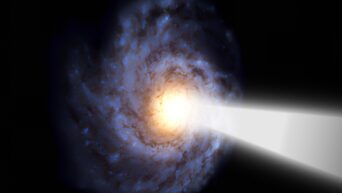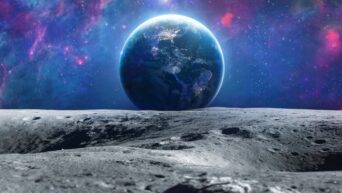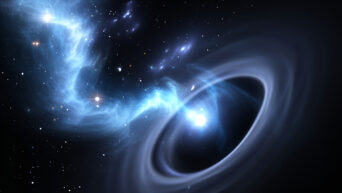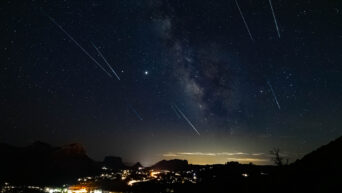Last week, a massive 8.8 magnitude earthquake rocked Russia’s Kamchatka Peninsula, rattling nerves from Japan to Hawaii. But while tsunamis have already made headlines, scientists are now addressing an even scarier question: could such a powerful quake unleash a chain reaction of volcanic eruptions along the entire 25,000-mile-long Ring of Fire — and end life as we know it?
The Ring of Fire is Earth’s most notorious geological hotspot: a sprawling horseshoe of 425 volcanoes looping around the Pacific Ocean, responsible for 75% of all active volcanoes on the planet. From Japan’s iconic Mount Fuji to the catastrophic Krakatoa in Indonesia, these fire-breathing mountains have shaped human history and climate alike. But what if they all erupted at once?
Could a Massive Quake Really Set Off the Ring of Fire?
Scientists agree that earthquakes and volcanic eruptions are closely linked in some cases. When tectonic plates grind and shift — like they did during this week’s Kamchatka quake — seismic shockwaves can travel hundreds or even thousands of miles. If these waves hit a volcano already close to eruption, they might tip it over the edge.
As Professor Valentin Troll, a volcanologist from Uppsala University, explains: “Seismic shockwaves can shake up volcanoes that are primed for eruption, increasing the chances they’ll blow.” This may have already happened with Russia’s Klyuchevskoy volcano, which began spewing lava shortly after the quake.
But don’t let your imagination run too wild: while earthquakes can trigger individual eruptions, experts are clear that no earthquake, no matter how huge, could ever ignite every volcano along the Ring of Fire.
What Would Happen If the Impossible Became Reality?
Let’s suspend disbelief for a moment: suppose every volcano on the Ring of Fire did erupt at once. The local devastation would be immediate and apocalyptic — entire cities would be buried under ash, deadly mudslides would sweep down mountains, and pyroclastic flows would obliterate everything in their path.
The chaos wouldn’t stop there. Ash and sulphur blasted into the atmosphere would darken skies worldwide, dropping global temperatures by up to 1°C (1.8°F) and plunging humanity into a volcanic winter lasting several years. Crops would fail, food prices would soar, and famine could spread across less wealthy nations.
Sounds like a nightmare, right? But before you start hoarding canned beans, here’s the good news: scientists say it’s simply not possible.
Why a Ring of Fire Armageddon Is Pure Science Fiction
First, the Ring of Fire isn’t a single, unified system — it’s a vast, messy network of subduction zones, each with different rock types and tectonic stresses. Dr. Jonathan Paul, an Earth scientist at Royal Holloway, University of London, points out that the energy required to blow every volcano simultaneously would dwarf even the meteor strike that wiped out the dinosaurs. In short: the Ring of Fire can’t work together like one giant doomsday machine.
Second, volcanoes don’t erupt on a hair trigger. Building up the immense pressure needed for an eruption can take years or even centuries. Earthquakes can only trigger eruptions in volcanoes already on the brink — like Kamchatka’s Klyuchevskoy, which was active long before this week’s tremor.
Finally, history gives us reassurance. Over the past century, multiple earthquakes as powerful as Kamchatka’s have rattled the Ring of Fire without sparking widespread volcanic mayhem. Professor Lisa McNeil, a plate tectonics expert at the University of Southampton, notes: “We’ve had several massive quakes in recent decades and none led to widespread simultaneous eruptions.”
What’s Really Worth Worrying About?
Instead of an instant apocalypse, the real danger comes from individual eruptions causing localized devastation — tsunamis, ash clouds, and climate blips like the “year without summer” after Indonesia’s Tambora eruption in 1815. But even Tambora’s colossal blast, which cooled the Earth by 0.5°C, was nowhere near an extinction-level event.
So rest easy: while the Ring of Fire will keep shaking and erupting for millions of years to come, the world won’t end in a single fiery cataclysm.
What Is the Ring of Fire, Anyway?
The Ring of Fire is a sprawling, 25,000-mile-long chain of volcanoes and earthquake zones circling the Pacific Ocean. It stretches from New Zealand through Japan, Russia, Alaska, down the Americas, and all the way to Chile. This fiery ring exists where the Pacific Plate collides with other tectonic plates, creating a geological pressure cooker prone to frequent quakes and eruptions.
But thanks to modern science, we know the Ring of Fire won’t erupt all at once. That’s one less apocalyptic scenario to worry about!


































